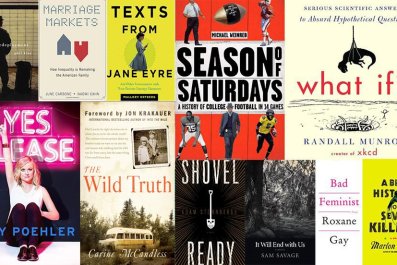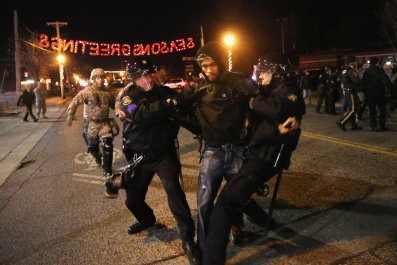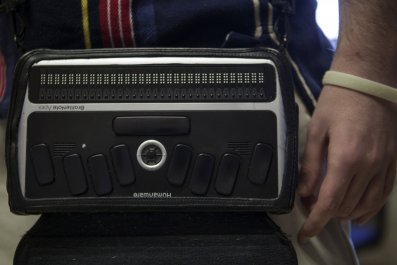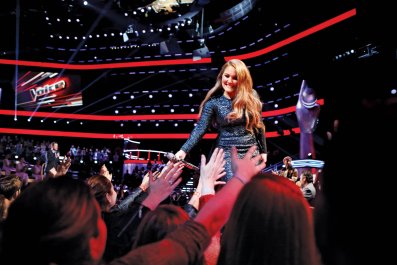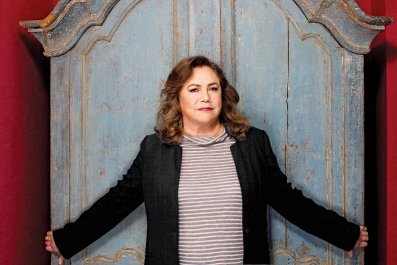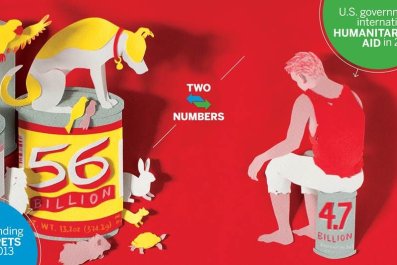The glass is bullet proof. There would be no escape, even if he could move. Winnie-the-Pooh is in prison, thousands of miles from home, forgotten by the outside world and languishing in the basement of a New York library. There have been campaigns in the past to free him from custody. Some say he is as precious to Britain as the Elgin Marbles are to Greece, and his return would mean as much, but even presidents and prime ministers have failed to right this wrong.
So the original Winnie-the-Pooh now sits incarcerated in a glass box in the main branch of the New York Public Library. This is the real mohair bear that Christopher Robin played with, the inspiration for all those beautiful stories – not the Disney imposter with his silly grin, bright fur and vulgar lack of hyphens. Put this real toy on show at the Disney Store on Times Square and there would be queues around the block to see him. Here, at the imposing but tatty main branch of the NYPL on Fifth Avenue and 42nd Street, there are marble lions flanking the entrance but no signs mentioning the presence of the bear.
You have to ask to see him. Twice, because the lady on the reception desk does not seem to know who he is. "Ah yes," she says, as recognition strikes. "You need the basement. Room 84."
This is extraordinary. Disney is still making hundreds of millions a year from Pooh The Imposter, beloved as he is to many. The much older image of the bear as drawn by Ernest Shepard for A A Milne's books has also become fashionable again in recent years, appearing on nursery toys, cots, nappy changing mats and wallpaper. Shepard's artworks are hugely prized by collectors. Sotheby's put one up for sale this week in London. The ink drawing of Pooh, Piglet and Christopher Robin on the bridge playing poohsticks was expected to sell for £150,000, at the time Newsweek went to press. The auction house said, "The illustration can be counted among the most familiar, and most loved, cultural references in English literature."

But while all this is going on, the real and original Pooh – the Elvis of stuffed toys – is all but ignored. "This is not right," says my daughter Ruby, approaching him with reverence in the low-lit basement room. She is 12 years old, like her brother and sister, and has come here today on a pilgrimage, to find the bear. It's personal. We have laughed with Pooh, felt for Piglet and fallen for Eeyore's grumpy charm. We have been to Ashdown Forest in Sussex and visited the real places that appear in the books, all of which are miraculously unspoilt. We ate honey sandwiches in the real Sandy Pit, sat under the trees in the Enchanted Place and played poohsticks on the bridge near the farm where the Milne family once lived. That was a lovely time.
So was the night when the triplets' older brother Jacob suddenly realised that Eeyore was really funny, in a way he had been too young to appreciate before. Such glorious laughter spilled out of that boy snuggled up beside me on the bed, it was like sunshine. I wrote in my diary that night: "He gets it!"
These stories touch lives. When things were a bit rough for us and it looked like the family would break up, Winnie-the-Pooh offered a way of gathering all the kids together to do something reassuring. Reading Pooh out loud let them know we would get through it, the things that mattered would not change. I promised we would one day come and see the real Winnie, far away. Now things are better, here we are. "On An Expotition," as Pooh would say. Promises are being kept and things being restored to their natural order, in the minds of the children. Except that, here in the basement, the opposite is true.
Ruby puts a hand out to touch the darkened glass box that also contains Piglet, Tigger, Eeyore and Kanga. Roo went missing a long time ago, but the Pooh Five are still together in front of a map of the places they used to play. That's not whimsy. These stuffed toys were dragged about all over Ashdown Forest by Christopher Robin Milne, who loved them vigorously for the first nine years of his life. "They should be allowed to go home," says Ruby, and she is not alone in that feeling. The British Labour MP Gwyneth Dunwoody has campaigned hard for repatriation, saying: "Just like the Greeks want their Elgin Marbles back, so we want our Winnie-the-Pooh back, along with all his splendid friends."
She even persuaded Tony Blair to discuss the fate of the bear with Bill Clinton, back in 1998. Unfortunately a White House spokesman said, "The notion that the United States would lose Winnie is utterly unbearable." That was that. The case was closed for years, although campaigners are now beginning to try again through their local members of parliament. There is talk of raising money for a new Winnie-the-Pooh museum in England and asking for the toys to be the centrepiece. "I don't think it should be over there," says one Sussex man, who does not want to be named, but who grew up alongside Christopher Robin and feels strongly about the bear. "Anything to do with Winnie-the-Pooh belongs in England, where it will be appreciated."
Shirley Harrison has written a biography of the real Pooh and campaigns for his return. "I don't think the New York authorities have ever really appreciated his emotional value, his literary value," she says. "When I went to see him it was cold, it was unfeeling. There were not many visitors. That would certainly not be the case if he was returned to England."
America certainly does seem to care less. Our family was with the Pooh Five for more than an hour but saw just one other couple stop and look. They were from Switzerland and did not stay long. "It's a travesty. Dreadful," says Mrs Harrison. "The bear should never have gone to America in the first place."
The story of his trans-Atlantic trip is full of sadness, although Pooh does also represent the American dream. He was just an ordinary teddy bear from the Farnell's factory in west London, one of hundreds made in the summer of 1921, until he hit the big time. Daphne Milne visited Harrods department store in Knightsbridge and took him home to Chelsea for her son's first birthday in August that year. Originally called Edward, he was renamed after a bear from Winnipeg, Canada, in London Zoo. Pooh was either a swan the family saw or the stink the bear made, depending on who you believe. Alan Alexander Milne watched Christopher Robin play with his toys and started writing stories about them.
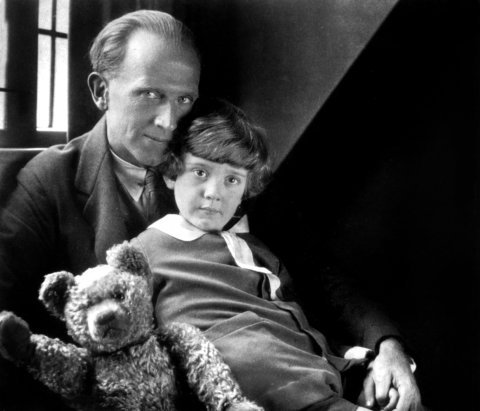
The first to appear in print was The Wrong Sort of Bees, published in the London Evening News on Christmas Eve 1925. The books followed and made both Milne and Christopher Robin famous. This did not make them happy, however. "Milne was really distressed that everything else he wrote got forgotten," says Harrison, who spoke to family and friends for her book The Life And Times of Winnie-the-Pooh (Pen & Sword). "Christopher Robin grew to thoroughly dislike Pooh because of all the publicity. He was really shy, a mixed up kid. An only child, sent away to school very early." The House At Pooh Corner ends with Christopher Robin telling the bear he will soon have to leave. It's a heart breaker, but the connection was nothing like as strong in real life. "I honestly don't think anybody in the family had an emotional relationship with the bear," says Harrison. "It was the rest of the world that fell in love with the character."
The toys were left lying around the living room until a visit from Milne's American publisher in 1947. Merchandising rights had already been sold to an artist and producer called Stephen Slesinger, who was busy selling his own version of the bear with a bright red t-shirt, an image that would later be licensed to Walt Disney. But the publisher Elliott Macrae saw the potential for making money by putting the original toys on tour throughout the US. "They were packed up in a chest and sent on by boat. They were an immediate hit. There was quite a lot of publicity about the whole thing."
Shirley Harrison believes the publisher did not buy the toys – the Milnes just never asked for them back. When the tours were over, the real Winnie-the-Pooh sat in Macrae's office for decades, while his imposter conquered the world. Disney took Slesinger's Pooh and made him a superstar. Their estates now split the royalties between themselves and the Pooh Properties Trust, set up by the Milne family.
Some of the trustees are said to be in favour of building a museum and asking for the toys back. However, they did not respond to a request for comment. So the real Winnie-the-Pooh sits in the New York Public Library where he was sent in 1987, given conservation treatment and put in a climate-controlled box.
The Library says "thousands of children and their parents" come to see him every year, but they are made to work hard for the privilege. There is very little mention of Pooh in the guide books or on the tourist trails and he does not even appear on the front of the Library's website. You have to search, again. "Pooh and his friends are as happy as when they lived in the Hundred Acre Wood," says the page.
Ruby is not convinced. "It's sad in here," she says, as the six of us stand in the basement room. "Someone needs to save Mr Pooh. Can't we steal them and take them home?"
I wish we could. But then as Winnie-the-Pooh himself said: "Some people care too much. I think it's called love."



